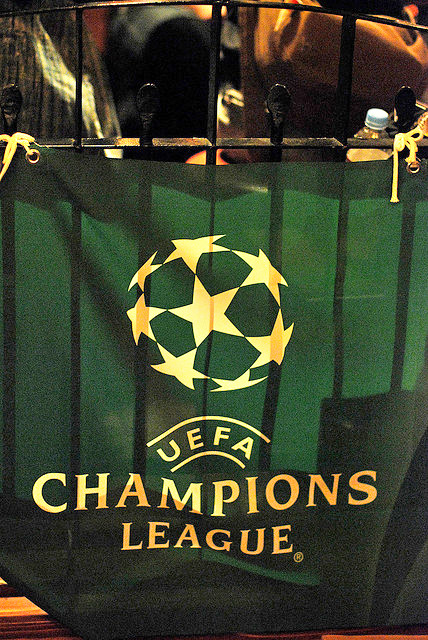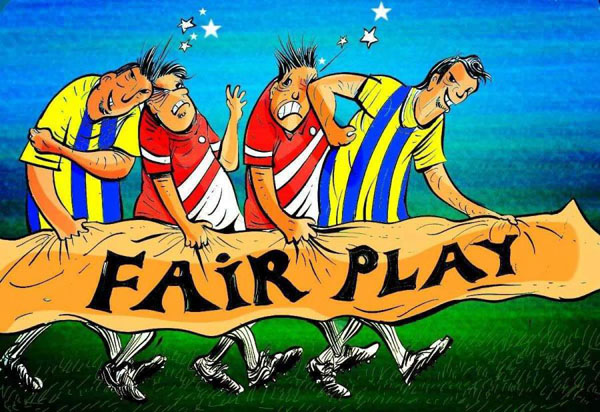 Many of you reading the articles on this website will be just about to start, or will have just started, studying economics at university. For some of you this will involve building on the knowledge you obtained prior to university, whereas for others it will be the first time you have ever studied the subject before. Will studying economics change the way you behave? Should it come with a health warning?
Many of you reading the articles on this website will be just about to start, or will have just started, studying economics at university. For some of you this will involve building on the knowledge you obtained prior to university, whereas for others it will be the first time you have ever studied the subject before. Will studying economics change the way you behave? Should it come with a health warning?
Can studying economics change the way you think and behave? The subject is often sold to prospective students on the grounds that it can. For example it is stated on the Economics Network’s Why Study Economics? website that
The economic way of thinking can help us make better choices
However, is it possible that studying economics could change people’s behaviour in a way that would be to the detriment of society? Some observers have argued that it can. They have suggested that students might be influenced by some of the assumptions that are made in traditional economic theory.
As social scientists, economists are always trying to analyse human behaviour. However, people vary in many different ways and have very diverse preferences. If we want to build a theory that predicts how people will behave and respond in different situations, then some type of simplifying assumptions are inevitable.
Traditionally one of the key simplifying assumptions that economists have used in their theories of human behaviour is that people make decisions in their own self-interest. There is some debate about exactly what self-interest means. For example it could be argued that giving £10 to charity is acting in your own self-interest if it gives you more pleasure than spending that £10 on yourself. However, in many of the economic theories that you first study in economics a narrow meaning of self-interest tends to be used. This is clearly illustrated by the following quote from Milgrom and Roberts. Referring to economic theory they state that:
It is often assumed that people behave as if they were entirely motivated by narrow, selfish concerns

It is important to make it clear that economists are not assuming that people behave in a selfish manner all of the time. Instead, they are assuming that the people in their theories are acting in a selfish manner. The value of making this assumption is whether the predictions about human behaviour that follow from using it are supported by evidence from the real world.
Some researchers have argued that when people study economic theory built on this assumption it makes them more likely to behave in a selfish way. The evidence for this comes from a range of research papers. Here are some findings:
Economics students were more likely than those studying other subjects to recommend the most expensive plumber to a student society if that plumber offered the student a side payment.
Students took part in an experiment in a computer room where they could either keep the money they had been given or donate it to a public good. On average the economics students kept more of the money.
Economics professors gave less money to charity than professors of other subjects such as psychology and sociology.
Some studies also found that selfish people were more likely to choose economics as a subject to study and became more selfish after they had studied it for some time.
If you are about to begin your study of economics then perhaps you should take care that your behaviour outside the classroom is not being unduly influenced by some of the assumptions you are learning about inside the classroom. On a more practical note perhaps you should avoid sharing a restaurant bill or buying rounds of drinks when in the company of other economists!!!
However on a brighter note, the evidence in these papers can be interpreted in a number of different ways. There are even some studies that found economics students were less selfish than those on other courses.
Re-Post: Does Studying Economics Make You Selfish? The Splintered Mind (21/11/12)
Does studying economics make you more selfish? BBC (22/10/13)
Does Studying Economics Breed Greed? Huffington Post (22/10/13)
The Dismal Education The New York Times (16/12/11)
Does Economics Make You a Bad Person? Conversable Economist (31/3/14)
Economists aren’t all bad FT Magazine (11/4/14)
Questions
- What is an economic model? Why is it necessary to make simplifying assumptions?
- How are economic models judged? How important is it for the assumptions to accurately describe the real world?
- Try to find some jokes that have been made about the use of assumptions in economic theory.
- Can you think of any alternative explanations for the results found in the research papers referred to in the case?
- Try to find a research paper that finds evidence that economics students are less selfish than other students.
- What is a public good? Explain why someone with selfish preferences would not contribute to the public good.
 Merlin Entertainments PLC is one of the largest operator of visitor attractions in the world and owns over a third of the most popular theme parks in Europe. It runs the four most visited parks in England – Alton Towers, Legoland Windsor, Thorpe Park and Chessington World of Adventures as well as the most popular theme park in Italy – Gardaland. Alton Towers alone had 2.5 million visitors in 2013. Anybody thinking of going to one of these attractions is faced with a wide range of different entry fees .
Merlin Entertainments PLC is one of the largest operator of visitor attractions in the world and owns over a third of the most popular theme parks in Europe. It runs the four most visited parks in England – Alton Towers, Legoland Windsor, Thorpe Park and Chessington World of Adventures as well as the most popular theme park in Italy – Gardaland. Alton Towers alone had 2.5 million visitors in 2013. Anybody thinking of going to one of these attractions is faced with a wide range of different entry fees .
Theme parks and tourist attractions have market power so their owners have to make some interesting pricing decisions. They have to tackle the same dilemma that confronts any seller that faces a downward sloping demand curve for its goods/services.
One option for the firm would be to increase the entry fee. This would produce higher profits per visitor as some of the surplus from the transaction previously enjoyed by the consumer will be extracted by the seller and converted into producer surplus. Unfortunately for the business the higher price, all other things equal, will also result in fewer visitors. Some people will be deterred from visiting because of the higher price and the seller will lose out on potential revenue.
An alternative strategy would be for the theme park to reduce its entry fee. All other things equal, this will increase the number of visitors. However, it would also mean that the profit per customer would fall. The frustrating issue for the seller is that some of its customers, who would still have visited the attraction at the higher price, are now able to get a better deal.
This dilemma exists if the seller has to charge all of its different customers the same entry fee. If it could charge a higher entry fee to those customers who would be willing to pay more and a lower entry fee to those who would be willing to pay less then it could make more money. Extra revenue could be obtained from those additional sales that take place at the lower price while more consumer surplus could be extracted from those still paying the higher price.
Is it possible for a firm to charge different prices to different customers for the same or a similar good or service? Table 1 below shows the entry fees for Warwick Castle, another tourist attraction owned by Merlin Entertainments PLC.

It can immediately be seen from this table that some groups of customers pay a different entry fee from others. For example adults have to pay £24 to enter on the day while people aged 60 and over pay a lower price £16.80. The entry fee for children aged between 4 and 11 is £21.00 while those aged 3 and under go for free. Students aged 16-18 can gain entry for a price of £13.50 if they can provide valid ID and purchase the tickets from the visitbritainshop website.
In this example, the company has allocated people into different categories by age (i.e. senior, adult, student, older children and younger children) and has set the entry fee that customers in each group have to pay.

The table also shows that if customers purchase on- line then they can get the tickets more cheaply. The entry fee for each category is 25% lower if the ticket is booked seven days in advance i.e. the prices shown in the last column in the table. If the booking is made between 2-6 days in advance then the discount is only 10% i.e. an adult ticket would cost £21.60. The on-line discounts are open to everyone. People are given the choice to either book on-line in advance or pay on the day. This is different from a situation where you are placed into a category by the firm. For example the customer cannot choose whether they are over 60!
If people are prepared to spend more time searching on the internet then other cheaper prices can also be obtained. Once again these offers are open to anyone willing to spend the time and effort in order to find them.
All the ticket prices above give people access to exactly the same attractions on the day. They do not give the visitor access to two of the attractions at the castle – the Dragon Tower and Castle Dungeon. Entry to the Dragon Tower would cost an adult on the day an extra £1.80 while entry to the Castle Dungeon would cost an extra £5.40.
Warwick Castle Ticket Prices Warwick Castle (accessed on 04/09/14)
Alton Towers Alton Towers (accessed on 08/09/14)
Warwick Castle Tickets visitbritainshop (accessed on 02/09/14)
Global Attractions Attendance Report teaconnect (accessed on 05/09/14)
Merlin Entertainments Merlin Entertainments (accessed on 08/09/14)
Questions
- What pricing decisions do firms have to make if they operate in a perfectly competitive market?
- Explain why an individual tourist attraction will have a downward sloping demand curve
- Paying an entry fee and an extra payment per attraction is known as what type of pricing? What advantages does this type of price strategy have for the seller?
- How would you calculate the profit per customer? What factors other than the entrance fee would determine the profit made per customer in a theme park or tourist attractions?
- Paying a different price depending on which category you have been assigned to by the seller is known as what type of pricing strategy? Can this type of pricing strategy ever be in the interests of society?
- In the example used in the case, customers are assigned to different categories by age. Can you think of any other ways that firms could categorise their customers?
- Given the category customers have been assigned to they can pay different prices depending on whether they buy the tickets on line. What is the price strategy called when customers can choose from a variety of pricing options for the same or similar product? Can you think of any different methods that could be used by the seller to carry out this type of pricing strategy?
 The draw for the lucrative group stages of the Champions League was made on Thursday 28th August. The 32 remaining clubs in the competition were allocated into eight groups of four teams. 74% percent of the respondents to a BBC survey thought that Manchester City had the toughest draw, while only 3.7% thought that Chelsea had the hardest draw. How did the Premier League champions end up in a much tougher group than the teams that finished in 3rd and 4th place? Was it purely by chance?
The draw for the lucrative group stages of the Champions League was made on Thursday 28th August. The 32 remaining clubs in the competition were allocated into eight groups of four teams. 74% percent of the respondents to a BBC survey thought that Manchester City had the toughest draw, while only 3.7% thought that Chelsea had the hardest draw. How did the Premier League champions end up in a much tougher group than the teams that finished in 3rd and 4th place? Was it purely by chance?
The unpredictability of a sporting contest depends not only on differences in the talent/motivation of the participants involved, but also on how the contest is designed and structured. The Champions League is an interesting case. The title of the competition would suggest that the participating clubs are all league champions from the 54 football associations spread across Europe. However, out of the 32 clubs which made it to the group stage, only 18 were actually the champions of their own domestic league.
22 teams automatically qualify for the group stages, while the other ten qualify via a knock-out stage of the competition. Of the 22 teams which gain automatic qualification only thirteen are league champions. The other nine places are allocated to teams which finished either 2nd or 3rd in their domestic leagues.
The inclusion of teams which did not win their domestic league occurs because UEFA allocates places in the Champions League by ranking the sporting performance of the 54 different football associations in Europe. This measure of performance, known as a Country’s Coefficient, is based on the results of the teams from each football association in both the Champions League and Europa League over the previous five years. If UEFA ranks a football association in one of the top three positions, then the teams that finish 1st , 2nd and 3rd in those leagues automatically qualify for the group stage of the Champions League. England is currently ranked in 2nd place behind Spain, which explains why Chelsea, which finished 3rd in the Premier League, obtained automatic qualification. The teams that finished 4th in these three top ranked leagues also gain entry to the final knock-out round of the competition. This is how Arsenal gained qualification for the group stage by narrowly defeating Besiktas from the Turkish League.
Teams from the lower ranked football associations have to win through more knock-out games in order to reach the lucrative group stage. For example the league champions from the bottom six countries (Faroe Islands, Wales, Armenia, Andorra, San Marino and Gibraltar) would have to win through four two-leg knock-out games. The league champions from Scotland would have to win through three as their football association is ranked in 24th place.
A draw takes place in order to allocate the remaining 32 teams to the leagues in the group stages. It is interesting how this allocation occurs because it is not a completely random process. UEFA ranks individual teams as well as countries. Real Madrid is currently ranked in 1st place while Port Talbot Town from the Welsh league is in 449th place. The top eight ranked teams still left in the competition are placed in pot 1, the 9th to 16th ranked clubs are placed in pot 2 and so on. One team from each pot is then drawn out at random and placed in a group. Therefore each group contains one club from pot 1, 1 club from pot 2, 1 club from pot 3 and 1 from pot 4.
The problem for Manchester City is that the seeding of each team is predominately determined by its performance in the Champions and Europa league over the previous five years. Once a team has made it to the group stages, its performance in its own domestic league has no impact on how it is seeded. This means that although Arsenal only finished 4th in the Premier League, it is placed in pot 1 for the draw because of its results in the Champions League over the previous five years. It therefore avoids the other top seeded clubs such as Real Madrid, Barcelona and Bayern Munich. Chelsea is also in pot 1, so was also more likely to get a favourable draw. Manchester City was seeded in pot 2 because it had only been in the Champions League for the last three years, so had not accumulated as many points as the teams who have been in the competition for longer.
Unfortunately for Manchester City, it was drawn in the same group as one of the strongest pot 1 teams – Bayern Munich. It was also unlucky to end up with one of the strongest teams in pot 4. Roma was runners up in the Italian league so was given an automatic place in the group stage. However it received a relatively low seeding as it is the first time it has been in the Champions league since 2010–11.
How much does the seeding matter? Since 1999–2000, when the group stage was expanded to 32 clubs, 86% of the top seeded teams have successfully qualified from the group stage into the last 16. Eleven of the last 16 winners were also from pot 1.
Articles
UEFA Rankings – Club coefficients 2014/15 UEFA (29/8/14)
UEFA Rankings – Country coefficients 2014/15 UEFA (29/8/14)
UEFA Rankings – Coefficients Overview UEFA (29/8/14)
Explained: The UEFA Champions League draw The Indian Empress (28/8/14)
Questions
- Uefa awards ranking points to teams based on their sporting performance. For example teams receive two ranking points for a victory against any team. This is different from the system used to rank national teams where the quality of the team defeated also influences the number of points awarded. What impact would it have if more ranking points were awarded in the Champions League for victories against higher ranked clubs?
- The Uefa system for ranking countries and teams is based on performance in European competitions over the previous 5 years. The performance in each year is weighted equally. What impact might it have if victories from the previous year were more heavily weighted than those from 4 or 5 years ago?
- The draw for the group stages of the Champions League could be made using a completely random process without any seeding. What impact might this have on the amount of money that firms in England, Spain and Italy would be willing to pay to secure the media rights?
- Can you think of any other elements of the design of the tournament that might have an impact on the predictability of the outcome?
 The round robin group stage of the World Cup was recently completed with 16 out of the 32 countries eliminated from the competition – including England, Italy and Spain. The remaining 16 countries progressed to the single game elimination section of the tournament. At the time of writing, the first round of elimination games had been completed with the remaining 8 teams proceeding to the quarter finals of the tournament. Two of these 8 elimination games ended as a draw after extra time. The winner was decided by a penalty shoot-out e.g. Brazil and Costa Rica. Are these shoot-outs just a lottery or are there any factors that significantly influence their outcome?
The round robin group stage of the World Cup was recently completed with 16 out of the 32 countries eliminated from the competition – including England, Italy and Spain. The remaining 16 countries progressed to the single game elimination section of the tournament. At the time of writing, the first round of elimination games had been completed with the remaining 8 teams proceeding to the quarter finals of the tournament. Two of these 8 elimination games ended as a draw after extra time. The winner was decided by a penalty shoot-out e.g. Brazil and Costa Rica. Are these shoot-outs just a lottery or are there any factors that significantly influence their outcome?
The penalty shoot-out was first introduced in June 1970 and has become an important part of competitions such as the World Cup and European Championships for national teams and The Champions League, UEFA Cup and FA Cup for club teams. English fans have suffered more than most with victory in only one out of the seven penalty-shoot outs they have been involved in at major tournaments. On average only three out of every five penalties taken were scored. Germany has a very different record. They have won six out of the seven shoot-outs they have participated in and have a scoring rate of 93%. The Czech Republic has an even better record as their players have not missed a single penalty in the three shoot-outs they have been involved in – including beating West Germany in 1976.
Each individual penalty can be thought of as an example of an interdependent or game theoretic situation. The penalty taker (PT) has to choose from one of three different strategies: shoot to the right, shoot to the left or shoot down the middle. The success of the penalty does not just depend on which of these strategies is chosen. It also depends on the choice made by the goalkeeper (GK) i.e. dive to the left, dive to the right or stay where they are.
In the jargon of game theory there is strategic interdependence. It can also be thought of as an example of a simultaneous game. After the ball is struck it takes approximately 0.3 seconds until it hits the back of the net!! Therefore it is impossible for the GK to observe the shot and respond. Instead they simply have to guess which way they think the PT will kick the ball and respond accordingly. The same reasoning applies to the PT. They cannot observe which way the keeper will dive before they strike the ball. A penalty shoot-out is also an example of a zero sum game. If one teams scores they are better off by one goal while the other team is worse off by one goal.
There is also a sequential element to the shoot- outs as in each round one team always follows another. Is there either a first or second mover advantage? Is there any advantage from always shooting first or second? This was a question investigated by some economists who analysed the data from 129 shoot-outs in ten different tournaments taken between June 1970 and June 2003. This cut-off was chosen because up until this point it could be argued that a penalty shoot-out was an example of a truly randomized field experiment. The team that won the coin toss was required to shoot first. Teams were not given a choice of whether to shoot first or second until the rules were amended in June 2003.
The economists found that the teams who took the first shot won in 78 (60.5%) cases while the team that shot second won in only 51 cases (39.5%). This evidence suggests that there is a significant first mover advantage. One explanation for this finding is that there is greater psychological pressure on the PTs who go second in each round of the shoot-off and this has a significantly negative effect on their performance. The researchers also found that in 19 of the 20 shoot-outs they observed after June 2003 the team that won the toss decided to kick first. They concluded that not only is there a first mover advantage, but that teams/players are aware of it.
If there is currently a first mover advantage which provides teams with an unfair advantage then is there anything that the football authorities could do to help reduce the bias? One suggestion is to change the order in which the teams shoot in each round. A similar approach could be taken to that used in tennis in order to determine the order of the server in a tie break.
Imagine a penalty shoot-out between England and Germany. The sequence below provides one possible alternative to the current structure of the contest.
Penalty 1: Germany England
Penalty 2: England Germany
Penalty 3: England Germany
Penalty 4: Germany England
Penalty 5: England Germany
Penalty 6: Germany England
This would involve increasing the number of penalties from 5 to 6 so that both teams get to shoot first in three rounds of the contest. Interestingly the authors also found any first mover advantages fell dramatically if the shoot-outs reached the sudden death stage.
It will be interesting to see if first mover advantages occur in the remaining games in the tournament.
The English Disease – How to handle pressure: lessons from penalty shoot-outs The Economist (14/6/14)
Penalty kick shootouts and the importance of shooting first Soccermetrics Research (3/1/11)
Game Theory Lesson: Man Utd v Chelsea Penalty Shootout Econfix (11/3/14)
World Cup Game Theory – What economics tells us about penalty kicks Slate (24/6/06)
Football penalty shoot-outs are unfair says new research LSE (16/12/10).
Questions
- Explain the difference between a sequential and simultaneous game.
- Explain how either the penalty taker or goal keeper might attempt to transform the penalty from a simultaneous to a sequential game. (Hint: watch the next time the Brazilian footballer, Neymar, takes a penalty!!!
- Give some examples of potential first or second mover advantages in other industries.
- What other factors might influence the outcome of a penalty shoot? Is it possible for researchers to obtain any data in order to control for any of the factors you have identified?
- Explain the difference between a zero sum game and a non-zero sum game. Give some real world examples of a non-zero sum game.
 They may not have been happy about it but the executives of Manchester City have finally agreed a settlement with UEFA after it was judged that the club had broken Financial Fair Play (FFP) rules. The club had initially indicated that they might take their case to the Club Financial Control Body’s adjudicatory chamber. For details about FFP, see previous article on the website: What does ‘fair play’ mean for the big teams in Europe?They have also now accepted the sanctions for breaking these rules which appear to be very similar in magnitude to those imposed on Paris St-Germain. UEFA have also judged that seven other clubs have failed to meet their financial requirements.
They may not have been happy about it but the executives of Manchester City have finally agreed a settlement with UEFA after it was judged that the club had broken Financial Fair Play (FFP) rules. The club had initially indicated that they might take their case to the Club Financial Control Body’s adjudicatory chamber. For details about FFP, see previous article on the website: What does ‘fair play’ mean for the big teams in Europe?They have also now accepted the sanctions for breaking these rules which appear to be very similar in magnitude to those imposed on Paris St-Germain. UEFA have also judged that seven other clubs have failed to meet their financial requirements.
Why did Manchester City fail the FFP rules when they appeared to be so confident that they would meet them? To understand this requires some discussion of a number of exemptions put in place by UEFA in the implementation of the FFP guidelines.
One of the key aims of FFP is to force the clubs who compete in European competitions to break even. However UEFA allow clubs to make some losses before any sanctions are applied. For the current monitoring period the clubs are allowed to make a cumulative loss of up to €45 million (approximately £37 million) over a two year period from 2011-2013 before any penalties are imposed. This permitted loss is referred to by UEFA as the ‘acceptable deviation’ from breaking even.
Manchester City reported losses in their financial accounts of £97million in 2011-12 and £51.6 million in 2012-13. At first sight this cumulative loss of nearly £149 million over the two year period would suggest that the club failed to meet the FFP regulations by a wide margin i.e. £112 million over the acceptable deviation. However the size of either the profit or loss reported in a club’s final accounts is different from the figure that is used by UEFA when assessing whether the teams have met the FFP criteria. UEFA exclude any costs incurred by the clubs on
– Youth development and community projects
– Building/developing their stadiums
Imagine a situation where after deducting these costs, Manchester City’s losses fell to £75 million in 2011-12 and £35 million in 2012-13. Once again it would still look as if they have failed to meet the FFP guidelines by a large margin. However there is another set of costs that can be excluded if a number of conditions are met. These are the wage costs in 2011-12 of those players who had signed contracts with the club before 1st June 2010. This exemption was introduced by UEFA because a number of clubs complained that they would struggle to meet the rules because of the nature of the players’ contracts. It is quite common for these to be of a 4 or 5 year duration. The teams argued that they were already committed to paying some players very large salaries in 2011-12 because of deals that were agreed long before the FFP rules were introduced. UEFA accepted this argument but only allowed the wage costs to be exempted from the FFP calculations on two conditions:
1. The club could show that the size of its losses were falling over time and that they had a clear strategy in place so that they would be able to comply with FFP regulations in future years.
2. The cumulative loss in excess of the acceptable deviation was caused by losses incurred in the 2011-12 period.
As there is a downward trend in the size of the losses being made by Manchester City they would appear to meet the first condition. It would also be important for them to convince UEFA that they had policies in place to reduce the losses below the permitted levels in the future. In the example above the second criterion is also met as the loss in 2012-13 of £35 million was lower than the acceptable deviation of £37 million. Therefore the reason why the cumulative permitted loss would be broken is because of the impact of the £75 million loss in 2011-12.
However there is another element to the second condition. The club also has to show that the sole reason for the loss in 2011-12 was because of the wage costs they were already committed to – i.e. from the contracts signed before the 1st June 2010. If these wage costs are smaller than the losses reported in that period then they cannot be exempted from the FFP calculations as they can only partly explain the loss.
Reports in the press have suggested that approximately £80 million of Manchester City’s wage bill in 2011-12 was caused by contracts that were signed with players before the 1st June 2010. If this was true then in the example above they would have met the FFP requirements as the £80 million of wages could fully account for the £75 million loss in the 2011-12 season. This would mean that the £80 million could be exempted from the FFP calculation and City would have made a cumulative loss of £35 million which was less than the acceptable deviation of £37 million.
If the wages paid to the players from the contracts signed prior to 1st June 2010 could not fully account for the losses in 2011-12 then they could not be deducted in the FFP calculations. For example imagine if after deducting the costs of youth/community projects and infrastructure spending that Manchester City’s loss had been £85 million in 2011-12 instead of £75 million. The wages bill of £80 million could not fully account for this loss of and hence the £80 million wage bill would be counted in the calculations. The cumulative loss would now be £120 million (£85 million + £35 million) and the acceptable deviation would have been exceeded by £83 million.
Unfortunately for Manchester City this appears to be more or less what happened. As part of the FFP process UEFA also examined deals struck between the club and other organisations in which the owner had an interest. These are referred to by UEFA as Related Party Transactions (RPTs). It would seem that the accountants at UEFA came to the conclusion that some of these RPTs were at above market prices. Interestingly some press reports have indicated that the £35 million a year deal with Etihad was judged to be fine. It was a number of secondary sponsorship deals which were considered to be above fair market values. Once adjustments were made to take account of this it looks as if the re-calculated losses for 2011-12 were greater than the £80 million of wages. With these wage costs not exempted from the calculation, Manchester City have been judged to have missed the FFP conditions by a wide margin.
The following quote is taken from a statement released by the club:
At the heart of the discussions is a fundamental disagreement between the club’s and UEFA’s respective interpretations of the FFP regulations on players purchased before 2010.
The following sanctions have been imposed:
– A £49 million fine to be withheld from UEFA prize money over the next three seasons. (£32 million is suspended and depends on their financial performance in future years)
– A limit on the squad size for the Champions League – 21 instead of 25 players
– Spending limited on transfers this summer to £49 million plus any revenue received in transfer fees from the sale of players
– A freeze on the wage bill of the Champions League squad for the next two seasons
It will be interesting to see if these penalties significantly constrain Manchester City’s ability to compete with the other big teams in Europe next season.
Articles
Manchester City accept world-record £50m fine for breach of Uefa Financial Fair Play rules The Telegraph, (16/5/14)
Manchester City facing £50m fine for breaching Uefa’s Financial Fair Play regulations The Telegraph, (6/5/14)
A beginner’s guide to UEFA’s financial fair play regulations SB Nation, (30/04/14)
Financial Fair Play Explained Financial Fair Play 2012
Man City to act swiftly in transfer market – Khaldoon Al Mubarak BBC Sport, (20/5/14)
Manchester City fined and squad capped for FFP breach BBC Sport, (16/5/14)
Manchester City facing Uefa sanctions over finances BBC Sport, (6/5/14)
Paris St-Germain’s £167m deal fails Uefa financial fair play rules BBC Sport, (1/5/14)
Manchester City and PSG breach Uefa FFP rules BBC Sport, (28/4/14)
Financial Fair Play: What rules have Manchester City broken and what are the likely sanctions? The Mirror, (6/5/14)
We’re innocent! Manchester City on the attack over FFP penalties The Express, (21/5/14)
Man City facing double UEFA punishment for breaching financial fair play rules talkSPORT, (6/5/14) .
Questions
- What are barriers to entry? Give 4 examples.
- What impact do barriers to entry have on a market? Draw a diagram to illustrate your answer.
- To what extent do you think that the UEFA Fair Play Rules act as a barrier to entry?
- What impact do you think the FFP rules will have on the marginal revenue product of the most talented players? Draw a diagram to illustrate your answer.
- Can you think of any methods that a club might use to try and circumvent a rule that attempts to restrict the size of its wage bill.
![]() Many of you reading the articles on this website will be just about to start, or will have just started, studying economics at university. For some of you this will involve building on the knowledge you obtained prior to university, whereas for others it will be the first time you have ever studied the subject before. Will studying economics change the way you behave? Should it come with a health warning?
Many of you reading the articles on this website will be just about to start, or will have just started, studying economics at university. For some of you this will involve building on the knowledge you obtained prior to university, whereas for others it will be the first time you have ever studied the subject before. Will studying economics change the way you behave? Should it come with a health warning?





